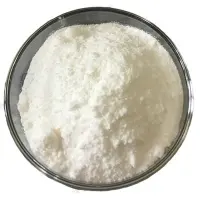-
Categories
-
Pharmaceutical Intermediates
-
Active Pharmaceutical Ingredients
-
Food Additives
- Industrial Coatings
- Agrochemicals
- Dyes and Pigments
- Surfactant
- Flavors and Fragrances
- Chemical Reagents
- Catalyst and Auxiliary
- Natural Products
- Inorganic Chemistry
-
Organic Chemistry
-
Biochemical Engineering
- Analytical Chemistry
-
Cosmetic Ingredient
- Water Treatment Chemical
-
Pharmaceutical Intermediates
Promotion
ECHEMI Mall
Wholesale
Weekly Price
Exhibition
News
-
Trade Service
Carbosulfan is an organic chemical compound that is commonly used in the chemical industry as a fumigant, a pesticide, and a solvent.
It is known for its effectiveness in controlling a wide range of pests, including insects, mites, and fungi, and it is used in a variety of applications, including crop protection, stored product protection, and public health protection.
Despite its widespread use, carbosulfan is a highly toxic substance that can have serious health and environmental implications if proper safety precautions are not taken.
In this article, we will explore the safety concerns surrounding carbosulfan and the measures that can be taken to minimize its risks.
Health Risks
Carbosulfan is a known human carcinogen, and exposure to the substance can cause a range of health problems, including respiratory problems, neurological damage, and reproductive issues.
Chronic exposure to carbosulfan has been linked to an increased risk of cancer, particularly in the liver, pancreas, and lungs.
In addition to its cancer-causing properties, carbosulfan is also highly toxic to the nervous system, and exposure to high levels of the substance can cause irritation to the eyes, nose, and throat, as well as headaches, dizziness, and nausea.
To minimize the risks associated with carbosulfan, it is important to take proper safety precautions when handling the substance.
This includes wearing appropriate personal protective equipment, such as gloves, safety glasses, and a face mask, and avoiding inhalation of the vapors or dust.
Environmental Risks
In addition to its health risks, carbosulfan is also a threat to the environment.
The substance is highly persistent in soil, water, and air, and it can have a negative impact on a wide range of ecosystems, including soil microorganisms, plants, and aquatic life.
Carbosulfan is also highly toxic to wildlife, and exposure to the substance can cause a range of health problems, including reproductive failure, behavioral changes, and death.
To minimize the environmental risks associated with carbosulfan, it is important to use the substance in accordance with applicable regulations and to take steps to prevent its release into the environment.
This can include proper storage and disposal of the substance, as well as the implementation of measures to prevent runoff or spills.
Safety Measures
To ensure the safety of workers and the environment, a number of measures can be taken when handling carbosulfan.
These include:
- Proper storage: Carbosulfan should be stored in a secure location, away from sources of ignition, and in compliance with applicable regulations.
- Proper handling: Workers should wear appropriate personal protective equipment when handling carbosulfan, and they should avoid inhalation of the vapors or dust.
- Proper disposal: Carbosulfan should be disposed of in accordance with applicable regulations, and measures should be taken to prevent its release into the environment.
- Proper training: Workers who handle carbosulfan should receive proper training on its safe handling and use, as well as the risks associated with exposure.
- Proper labeling: Containers of carbosulfan should be labeled with appropriate hazard warnings and instructions for safe handling.
In conclusion, carbosulfan is a highly toxic substance that can have serious health and environmental implications if proper safety precautions are not taken.
To minimize the risks associated with carbosulfan, it is essential to take appropriate safety measures, including proper storage, handling, disposal, training, and labeling.
By following these measures, workers and the environment can be protected from the harmful effects of this chemical.







